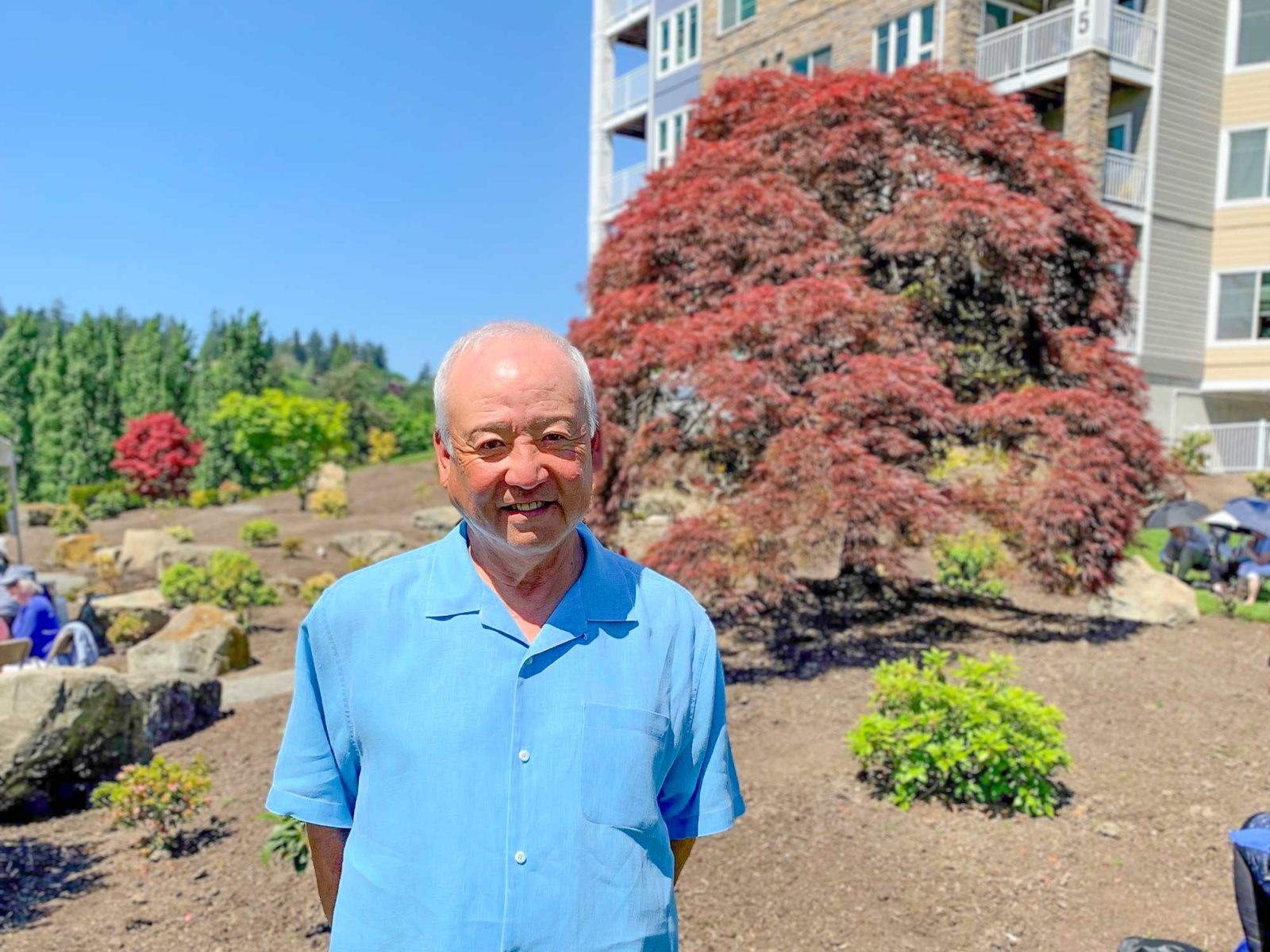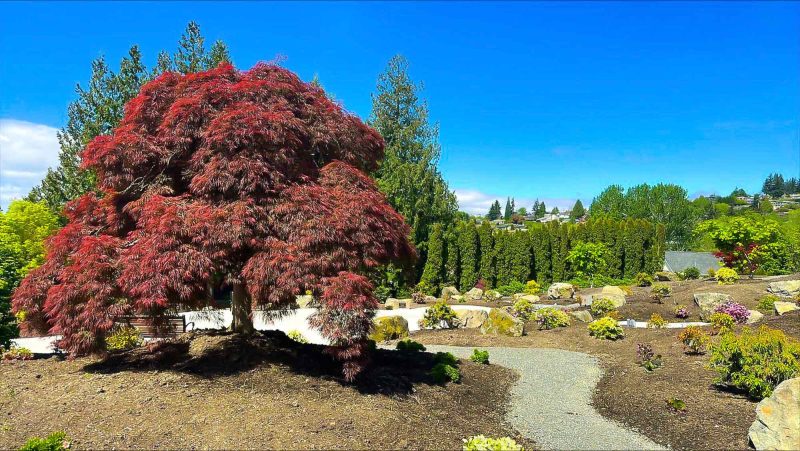
Allan Kubota is the third generation landscape designer from arguably the most famous gardening family in the Puget Sound region. One century ago, Fujitaro Kubota, Allan’s grandfather, founded the Kubota Gardening Company. The landscaping company’s worksite grew into Kubota Garden, considered among the most prestigious public gardens in the Pacific Northwest.
Allan grew up watching his grandfather and father design gardens for Seattle University, the Bloedel Reserve, and numerous private residences. At 74 years old, Allan has added to the Kubota family legacy by designing the Anna and Harry Hasegawa Meditation Garden at Wesley Des Moines. To create this stunning garden, Allan “drew” from the same Kubota design philosophy he has employed for a half century.
“I don’t create a landscape blueprint before a project,” he said. “For me, the design revolves around how to place the garden. I start with a rough idea, but I find it very hard to write it down, as it restricts my creative thinking and represses potential discovery.”
The Hasegawa Meditation Garden was more freeform than most of Allan’s projects. The exact site of the garden was undetermined when he first visited. Allan teamed with Wesley Community Foundation’s Executive Director Susan McConnell and Erica Wingard, Major Gift Officer and Campaign Manager. They chose an area on the south side of the campus near The Gardens apartments and Cottages. This was the perfect spot for this private garden for Wesley residents and their families.
“We found a flat area with a partial slope that was closer to the residents and visible from above,” he described. “We also discovered heavy clay soil after we removed the sod. This soil type was perfect for installing a waterfall, which grew in size as we developed the project.”
Allan made two other important discoveries while creating the garden. Wesley still possessed several large basalt boulders that were removed during the campus’s redevelopment construction. These rocks would form the foundation of the meditation garden’s water feature. This waterfall gave the garden the “little splash” that Susan and Erica requested.
“I also possessed a large Japanese maple at another property that I thought would become an excellent focal point for the garden,” Allan said. “This maple is larger than one might find at a wholesale nursery. Though we would usually add a signature piece first, we had to wait until it was dormant to move it. So we added it last. This provided maturity to the design immediately.”
Allan and his crew planted several other Japanese maples in the garden. These trees provide shade and require very little maintenance, another goal of the Kubota design. He also planted Japonica, rhododendrons, azaleas, and other “soft” native plants. They create a serene ambiance where residents and their guests may rest and relax.
“I thought it was important to provide easy access to the garden with two clear entrances. One can also enter from across the lawn. To determine the entrances, I watched the residents come and go from the Cottages and flow from the main building. The entry points are convenient for everyone.”
A gathering space was also requested. Allan and his team created a concrete terrace large enough for small events without losing intimacy. This space contributes to the symmetry of the meditation garden, especially when viewed from the above apartments and community spaces.
“We built the terrace out of concrete to keep maintenance at a minimum,” Allan said. “This design also eliminates seams and slope to allow access for residents with mobility challenges.”
The initial creation of a garden always appears a little unfinished, the natural result of plants needing time to grow into form. Allan takes pride in his sparse designs, noting the pleasure residents will experience as this new garden matures.
“I like to keep it simple and work with familiar plants that don’t require high maintenance,” said the master designer. “There may be a lot of visible ground at first, but we won’t have to cull plants later.”
Allan’s landscape gestalt for Wesley exemplifies the “Kubota method,” a series of evolving decisions that created the new garden organically.
“The final project is very similar to my original goal,” he said, “which is very satisfying.”
Whether walking the paths, sitting beside the waterfall, or relaxing with friends and family, visitors to the Anna and Harry Hasegawa Meditation Garden will also feel a sense of peace and contentment.
The Wesley Community Foundation was able to support the creation of this garden through the generous support of the Hasegawa Family and many others. We are so grateful for the generosity to make this project a reality for many to enjoy!
